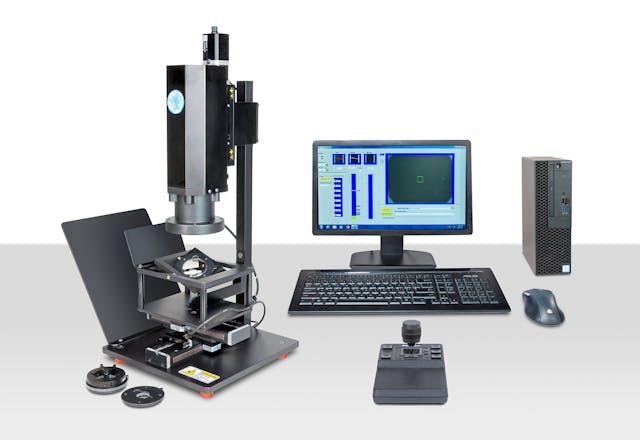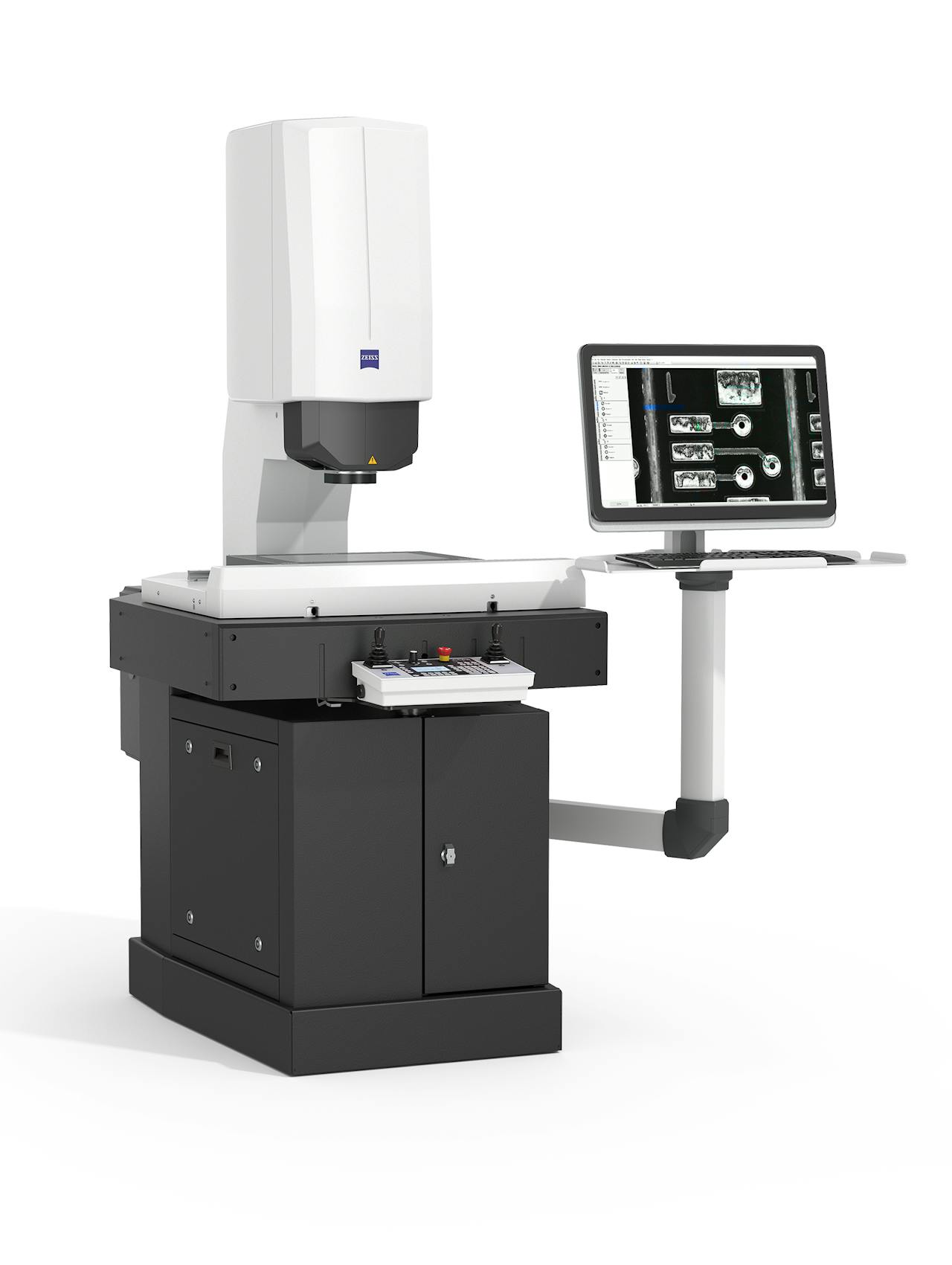Real-time insights with an optical measurement system: What to expect
Real-time insights with an optical measurement system: What to expect
Blog Article
Recognizing Just How Optical Dimension Solution Enhance High Quality Control Processes
When you're aiming to improve quality assurance procedures, understanding optical measurement systems is crucial. These modern technologies supply exact, non-contact measurements that can transform your evaluation methods. By leveraging innovative strategies, you can streamline procedures and lessen mistakes. Just how precisely do these systems integrate right into existing process, and what benefits do they bring? Let's check out the vital facets that make optical dimension a game-changer in high quality monitoring.

The Basics of Optical Measurement Systems
Optical dimension systems play an important function in ensuring product quality across various industries. These systems utilize light-based technologies to gather precise data about physical characteristics, such as dimensions, surface coating, and shade. By utilizing sensing units, cams, and lasers, you can attain non-contact measurements that reduce the risk of damaging fragile items.
Comprehending the fundamentals of these systems is basic for reliable quality assurance. They operate on concepts like diffraction, representation, and refraction, permitting you to analyze numerous materials and shapes. The accuracy and rate of optical dimensions allow real-time monitoring, which aids you determine defects early in the manufacturing process.
In addition, these systems can be integrated with software for improved data analysis, developing a thorough quality monitoring approach. By leveraging optical dimension systems, you not just boost efficiency but additionally ensure your items meet rigid quality standards, ultimately improving consumer fulfillment.
Kinds Of Optical Dimension Technologies
Countless sorts of optical measurement technologies are readily available, each developed to satisfy certain requirements in high quality control. You may come across laser triangulation, which determines range by assessing the angle of a mirrored laser beam. This modern technology is suitable for recording precise dimensions in 3D area.
An additional option is structured light, where you predict a collection of light patterns onto a surface area to produce a detailed 3D model. This approach works well for complex geometries.
Then there's interferometry, which can detect minute modifications in surface area accounts by analyzing the interference patterns of light waves. This is specifically helpful for applications needing nanometer precision.
You may likewise take into consideration optical coherence tomography, which supplies high-resolution photos of interior attributes without harming the item. Each innovation serves different demands, so selecting the best one is vital for accomplishing highest quality control results.
Secret Benefits of Optical Measurement in Quality Assurance
When it pertains to high quality control, leveraging optical measurement innovations can considerably improve precision and effectiveness. These systems enable you to capture in-depth measurements quickly, reducing the time required for evaluations. You'll observe that optical dimensions can identify also the tiniest flaws that may go unnoticed with typical approaches, making sure product uniformity.
Furthermore, using optical dimension systems commonly causes minimized waste and rework, as you capture issues early in the production procedure. You'll likewise value the non-contact nature of several optical techniques, which decreases damages to delicate parts during assessment. This versatility permits a wider variety of applications throughout different products.
With real-time data collection, you can make enlightened decisions swiftly, simplifying your high quality assurance procedures (optical measurement). Inevitably, incorporating optical dimension right into your quality assurance method not just boosts productivity however also enhances customer contentment by delivering higher-quality products constantly
Just How Optical Dimension Equipment Improve Accuracy and Precision
Optical measurement systems increase accuracy and precision by enhancing measurement resolution, allowing you to spot even the smallest variations. With real-time data analysis, you can make immediate adjustments and decisions, ensuring your procedures remain on track. This mix not just boosts item top quality yet additionally streamlines your quality control efforts.
Boosted Measurement Resolution
By leveraging sophisticated modern technologies, optical measurement systems significantly enhance measurement resolution, leading to improved precision and accuracy in quality assurance. These systems use high-resolution electronic cameras and sophisticated algorithms to record minute information that standard techniques frequently miss. You'll see a substantial difference in the quality of measurements, allowing you to recognize even the slightest deviations from requirements. This boosted resolution assists remove uncertainty, providing you with information that's both trustworthy and actionable. Therefore, you can make even more informed decisions and keep tighter tolerances in your procedures. Ultimately, improved measurement resolution not just improves item high quality yet also maximizes resource use, guaranteeing that you fulfill customer expectations regularly.
Real-Time Data Analysis
Although typical measurement systems often count on delayed information processing, real-time information analysis in optical measurement systems revolutionizes the method you monitor top quality. You'll experience improved precision since you can promptly compare dimensions against predefined requirements. In addition, real-time data assists you accumulate useful insights over time, tweak your top quality control processes.
Incorporating Optical Measurement Into Existing High Quality Control Processes
Incorporating optical measurement into your existing top quality control procedures can significantly boost accuracy and performance. By integrating optical dimension systems, you can simplify information collection, decreasing human error while boosting the rate of inspections. Start by determining bottom lines in your production line where optical measurements will give one of the most value.
Next, train your team on the new innovation, ensuring they comprehend just how to make use of the systems effectively. This training will help them interpret results rapidly and precisely.
You must additionally develop a method for incorporating optical data into your existing quality management software. This integration permits real-time analytics and coverage, boosting decision-making.
Regularly review the information and responses from your group to determine any type of locations for enhancement. With these steps, you'll not just enhance your quality Homepage assurance processes but additionally cultivate a society of continuous improvement within your company.
Case Researches: Effective Application of Optical Measurement Equipments
In this section, you'll explore just how optical measurement systems have actually changed quality assurance in industries such as aerospace and automobile manufacturing - optical measurement systems. You'll see real-world instances of exactly how these technologies boosted accuracy and performance. These study highlight the substantial benefits of incorporating optical systems into manufacturing processes
Aerospace Sector Applications
As the aerospace sector deals with boosting demands for precision and efficiency, companies are transforming to optical dimension systems to improve their high quality control processes. A leading aircraft supplier incorporated optical measurement technology to inspect generator blades, lowering assessment time by 50% while enhancing accuracy.
Automotive Production Success
Optical measurement systems have also made considerable strides in the vehicle production field, where accuracy is crucial to lorry efficiency and safety and security. BMW incorporated optical dimension for body setting up, making certain parts fit flawlessly, which reduced rework and increased production performance. These instance researches show exactly how optical measurement systems empower you to achieve tighter tolerances, minimize waste, and boost total item high quality.
Future Trends in Optical Dimension and Quality Control
While innovations in innovation remain to reshape the production landscape, the future of optical dimension and high quality control looks encouraging - optical measurement system. You'll see a substantial shift in the direction of automation and AI integration, allowing systems to assess information in real-time. This implies quicker decision-making and minimized human error, inevitably boosting item high quality
Furthermore, as 3D imaging technology enhances, you'll profit from even more exact measurements of complex geometries, making it less complicated to preserve tight tolerances. The surge of cloud-based services will likewise enable you to accessibility data remotely, helping with cooperation and enhancing procedures.
In addition, sustainability will play a crucial duty in future advancements. Anticipate optical measurement systems to concentrate on power effectiveness and waste decrease, aligning with worldwide ecological objectives. By embracing these patterns, you can guarantee your high quality control processes continue to be innovative, helping your organization flourish in an increasingly open market.
Regularly Asked Concerns
What Industries Advantage Most From Optical Dimension Solutions?
You'll find sectors like manufacturing, aerospace, and vehicle advantage most from optical dimension systems. These fields rely on specific dimensions for quality control, ensuring items fulfill strict standards and improving general operational effectiveness.
How Do I Choose the Right Optical Dimension System?
To choose the appropriate optical measurement system, examine your certain requirements, think about the kind of dimensions you require, examine the system's accuracy, and guarantee it fits your budget and operational requirements.
What Prevail Difficulties in Implementing Optical Dimension Equipments?
You'll deal with challenges like assimilation with existing systems, making certain accurate calibration, training staff successfully, and taking care of costs. Determining these hurdles early aids you develop approaches to conquer them and effectively implement optical dimension systems.

Exist Training Resources Available for Optical Dimension Technologies?
Yes, there're various training resources offered for optical measurement innovations. You can locate on the internet training courses, webinars, and workshops used by industry professionals or organizations. These resources can help you successfully apply and utilize these innovative systems.
Just How Do Optical Measurement Systems Compare to Conventional Dimension Approaches?
Optical measurement systems use better accuracy and speed contrasted to traditional techniques. They decrease human mistake, allow non-contact measurements, and supply real-time information evaluation, making them more effective for numerous applications in high quality control.
Verdict

Optical dimension systems improve accuracy and precision by improving measurement resolution, permitting you to spot even her explanation the smallest variations.By leveraging advanced innovations, optical measurement systems considerably improve dimension resolution, leading to boosted accuracy and precision in quality control.Although standard dimension systems typically rely on postponed data processing, real-time data evaluation in optical dimension systems revolutionizes the means you monitor quality.As the aerospace market deals with boosting demands for precision and effectiveness, firms are transforming to optical dimension systems to improve their top quality control procedures. How Do Optical Dimension Equipments Contrast to Traditional Dimension Techniques?
Report this page